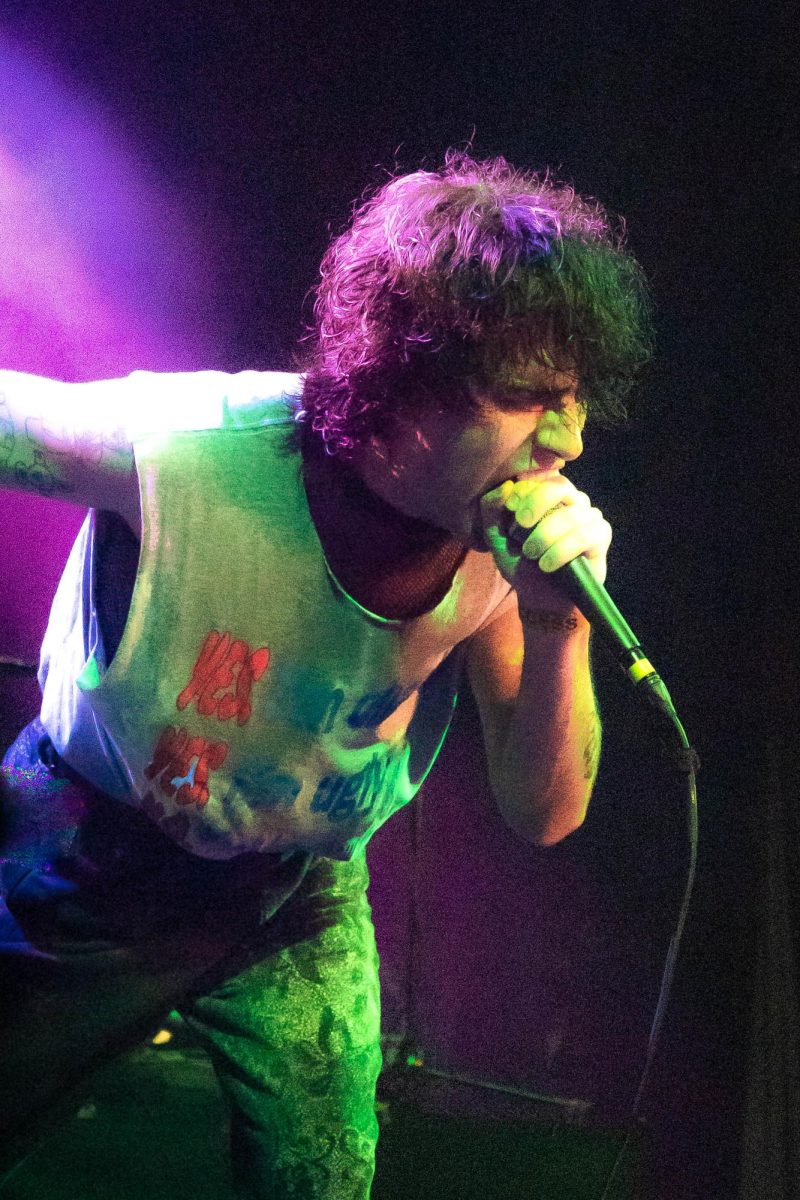The man in the Wayfayer glasses is back for an encore.
Following its success from last fall, “Buddy: The Buddy Holly Story” returns to the Cameo Theatre for a two-week run. The production isscheduled to end on Feb. 24.
“Buddy” chronicles the iconic singer’s early roots in the rock n’ roll business with snapshots of the singer’s most memorable performances as well as his influence on the rock n’ roll genre.
The musical follows the style of a jukebox musical—one that uses a catalog of music previously recorded by a hit artist. Fans of oldies music will enjoy the catalog of songs chosen for the production. Fans can expect to hear “Peggy Sue,” “La Bamba,” “Why Do Fools Fall in Love” and “Raining in My Heart.”
“Buddy” is split into two segments. The first act follows Holly’s early career as a Country-Western star in Lubbock, Texas. This act ends with Holly’s legendary performance at The Apollo Theatre in Harlem, NY. The second act reveals his transition as a mature artist who discovered his own sound in New York City.
Stewart Mann, who portrays Holly in the show, accurately captures the charismatic nature of the Texas legend. Mann absorbs the characterand makes it his own. Fans of the rock pioneer will appreciate Mann’sauthenticity and raw talent in the production.
It is evident that Mann has incorporated his experiences asa musician in the Austin-based band The Statesboro Revue as inspiration for thecharacter. Mann’s passion for the genre is felt through his excellent pitch and dedication to Buddy’s nature on stage.
Stewart Mann’s brother, Garrett Mann, plays Tommy in theproduction and is also involved with the Statesboro Revue as a side project.
The chemistry between Stewart Mann and Jovi Lee Gonzales,who plays Maria Elena Santiago, is heartfelt and intimate. Both actors bond nicely onstage and create the illusion of a newlywed couple in bliss.
In the production, audience members take on the role of spectators from the days that Holly made his mark in the music arena. The audience is given a glimpse into the whirlwind lifestyle of the singer through his first year of success and his disputes between fellow band members, managers and critics.
The musical quickly turns the small theatre into a live dance party with performers reaching out into the crowd for dance partners. The final act transports the audience to Holly’s last performance at the Winter Dance Party of 1959.
The stage appears to be much more spacious with fewer props compared to previous productions featured in the space. This change is refreshing.
The musical is organized by Jonathan Pennington StudioProductions, which is best known for its adaptation of “Hairspray” and, most recently, “Cats.”
Although the musical shines in the majority of its scenes,there are a few things that need to be addressed.
The video clips projected on the main screens can be a bit nauseating for those sitting in the front rows by making audience members turnback and forth from the screens to the live action. The audience is constantly guided toward the screens while the crew arranges the set for the next act .After a few references to the screens, the audience may feel a sense of whip-lash.
While some clips seem unnecessary and distracting, others give the audience a glimpse into Holly’s life that may not be as easy to show in a different medium. The dependency of the screens is unpleasant but does not overshadow the talent of the performers.
The use of one actor for multiple roles can be a bit confusing for those who are not entirely familiar with the rock legend’s life. This may be due to a lack of character differentiation in costume design. The roles of some become blurred with little to no character development. Fo rinstance, Thad Payne plays three roles in the musical and becomes lost in the haze of three different characters. It is not until another cast member introduces him that the distinction is clear.
Although “Buddy” ends with the tragic accident that took the singer’s life, the audience is left with a smile. “Buddy” serves as a celebration of the singer’s life.
Musicals like this do not come around often, but when they do they bring a sense of appreciation from those who grew up in that era andthose who wish they did.
A string of shows have been added to the Cameo Theatre lineup including, “The Rat Pack,” “All Shook Up,” “Jekyll and Hyde” and “The Rocky Horror Picture Show” in late Fall.
Starting next month, musical lovers can expect to see Pennington’s version of “Avenue Q,” a raunchy play that follows the antics ofpuppets. His adaptation of “Evil Dead: The Musical” is slated to begin in October.










